Carbon-Consuming Circular Economies (CCCE)
Technical White Paper
Written By Michael Noel and Ash Aly
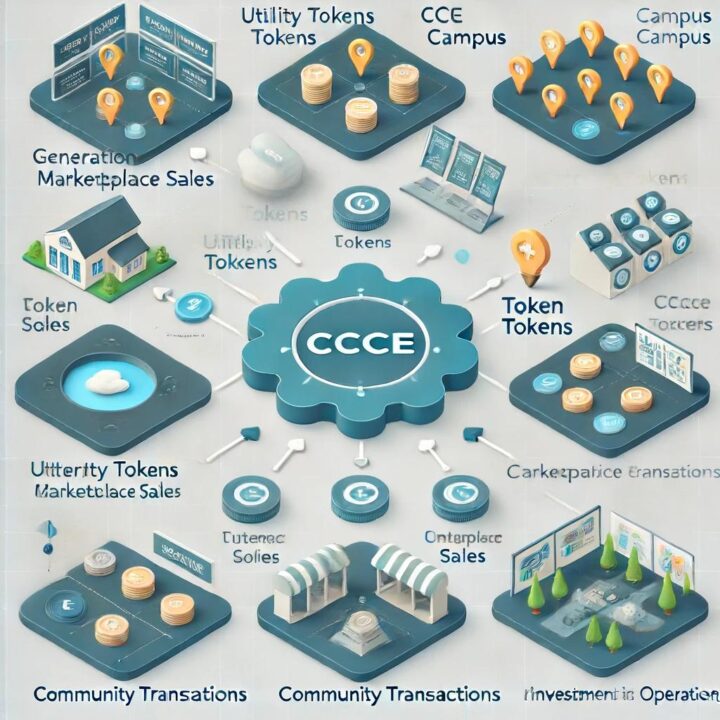
1 Preface
2 Introduction
3 Plasma Gasification
4 Digital Ledger Technology (DLT)
5 Comprehensive Communications Infrastructure
6 Sustainable Agriculture
7 Educational, Healthcare, and Housing Systems
8 Case Study Uganda
9 Conclusions Overall System Efficiency
10 Capitalization
11 Contributors
12 Action Items
Preface:
Paradigm shifts become necessary when the plausibility structure of the previous paradigm evolves so full of holes and patchwork “fixes” that a complete overhaul, which once looked utterly threatening, now appears as a lifeline.” – Richard Rohr on Kuhn’s “Paradigm Shift”
A paradigm shift is a major change in how people think and get things done that upends and replaces a prior paradigm (Disruption).
There is often resistance to a new paradigm coming from incumbents.
Such are the times we live in today.
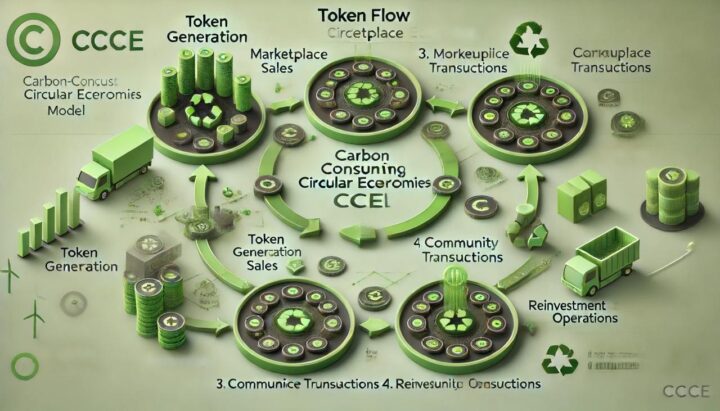
Carbon-consuming circular Economies (CCCE) propose a community-oriented paradigm with a transformative approach to green energy production and rural economic development. Primarily integrating advanced off-the-shelf technologies, advanced sustainable agriculture, and state-of-the-art gasification practices.
Carbon-consuming circular Economies (CCCE) support resilient, self-sufficient campuses that actively, and verifiably, reduce atmospheric carbon while promoting economic, and community growth.
Campuses can be created in a matter of weeks, anywhere in the world as long as there is enough water to serve agriculture. In places of displaced populations, these campuses could serve to offer hope, opportunity, education, health, and shelter. In Sovern Nations such as United States Tribal Lands, these Campuses offer opportunity, education, and a greener future. In areas with Refeguee populations, Refeguee campuses create hope for a viable future.
On these campuses, there is an implementation of Digital ledger technology. This provides secure, transparent transactions for the community via a Utility Token. Fostering this community utility token and driving engagement will be key to the success of any campus. This digital Infrastructure also supports community services such as well-care/healthcare, housing, and community communication.
Campus Potential Daily Outputs
Carbon-Negative Fuel for Aviation
Carbon-Negative Electricity
Carbon-Negative Heat Energy
CBD Oils
Bio Char
Solid Carbon
Wood Vinegars
Community Growth
Agriculture jobs
Transportation and Logistics jobs
Plasma Gasification plant jobs
CBD Oil Processing jobs
CBD Oil Refining and pharmaceutical production jobs
Education System jobs to Teach new hires
Healthcare provider jobs
Housing providers jobs
Other jobs

Customer Centricity in the Platform Revolution | Sangeet Paul Choudary In his 2016 keynote, discussed the clear shift from asset-centric business models to consumer-centric platform business models. From Pipes to Platforms. The CCCE workflow follows the platform model.
Forward-Looking Statements
This White Paper contains forward-looking statements within the meaning of the U.S. federal securities laws, which involve substantial risks and uncertainties. The forward-looking statements involve known and unknown risks, uncertainties, and other factors that may cause our actual results, performance, or achievements to be materially different from any future results, performances, or achievements expressed or implied by the forward-looking statements, many of which are beyond any groups or individuals control of These risks and uncertainties include, but are not limited to, the factors described in the section captioned “Risk Factors.” In some cases, you can identify forward-looking statements by terms such as “anticipates,” “believes,” “could,” “estimates,” “expects,” “intends,” “may,” “plans,” “potential,” “predicts,” “projects,” “should,” “would” and similar expressions intended to identify forward-looking statements.
These risks and uncertainties include, but are not limited to:
(i) the timing to consummate the proposed Token Sale;
(ii) the risk that the proposed Tokens might otherwise not occur, whether as a result of the current token sale regulatory limitations or otherwise;
(iii) the risk of criminalization of Token sales and/ or Token-related products by an applicable governmental jurisdiction (including the U.S.);
(iv) the risk that a regulatory approval that may be required for the proposed sale is not obtained or is obtained subject to conditions that are not anticipated;
(v) the diversion of management time on transaction-related or other issues;
(vi) the ability of management to successfully implement its business plan; or (vii) general market factors and federal and state regulations and legislation.
Forward-looking statements reflect our current views concerning the future
events and are based on assumptions and are subject to risks and uncertainties.
1 Introduction – Thinking Locally, globally.
The early 1900s heralded the creation of the carbon-creating consumer Economy that we live in today. This carbon-creating consumer Economy generated massive wealth for some. It also created enough Atmospheric Carbon to cause trillions in damage, and millions of deaths globally.

The United Nations has recognized that these environmental challenges need bold action to overcome them, and that is where the UN Sustainable Development Goals come in. They are a plan agreed to by all world leaders to build a greener, fairer, better world by 2030, and we all have a role in achieving them.
The United Nations contribution to SDG progress is UN 2.0, a vision of a modernized UN system: with cutting-edge skills and forward-thinking culture for stronger results, better Member State support, and greater SDG impact. Today the UN is striving towards its vision with a powerful fusion of data, innovation, foresight, and expertise. Yet halfway through the 2030 Agenda, the Sustainable Development Goals (SDGs) are lagging. To get back on track, all of us need to rethink, refocus and recharge.
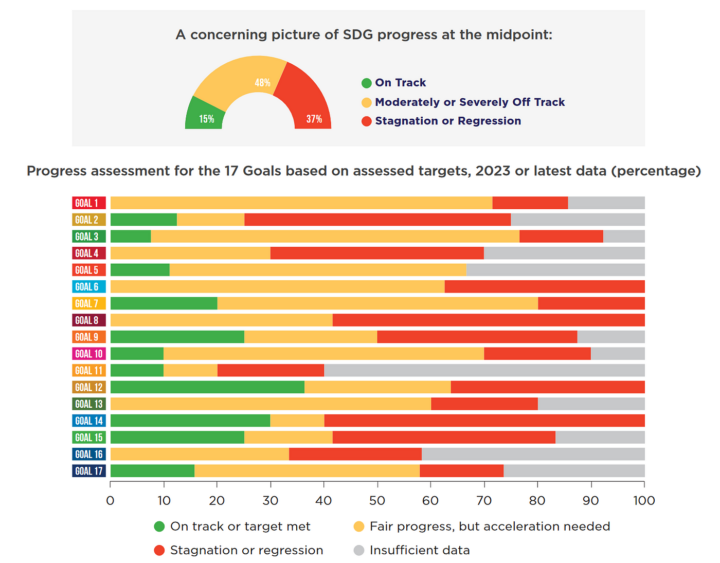
Carbon Consuming Circular Economies may help get SDG Goals back on track with a specific focus on climate change mitigation (SDG No.13) and clean and affordable energy (SDG No.7).
While Carbon carbon-creating consumer economy we have today creates massive amounts of carbon, Carbon carbon-consuming circular Economies consume that same carbon, and create communities, with infrastructure like education, well care, healthcare, and housing provided at near zero marginal cost.
The Unique Solution: Carbon-Consuming Circular Economies
Core Components of a CCCE Campus
- Plasma Gasification
- Digital Ledger Technology (DLT)
- Comprehensive Communications Infrastructure
- Sustainable Agriculture
- Educational, Healthcare, and Housing Systems
1 Plasma Gasification:
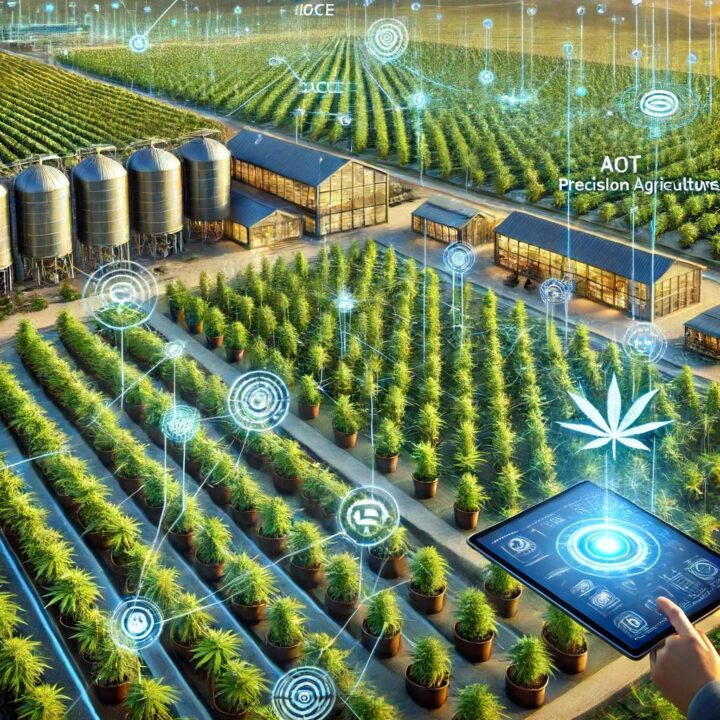
Transforming Green Feedstocks into Value
SDG 7: Affordable and Clean Energy: Hemp-derived syngas can be used as a sustainable alternative to traditional fossil fuels. Syngas, a mixture of hydrogen, carbon monoxide, and other gases, can be produced from hemp biomass through a plasma gasification process.
This renewable energy source can help reduce dependence on fossil fuels and contribute to the transition towards cleaner and more sustainable energy sources.
SDG 13: Climate Action: Hemp-derived syngas can help mitigate greenhouse gas emissions by replacing fossil fuels in various applications. The use of hemp biomass for energy production can also contribute to carbon sequestration, as hemp plants absorb carbon dioxide from the atmosphere during their growth. Additionally, hemp cultivation can enhance soil health and require lower nutrient inputs compared to other crops.
Plasma gasification is a cutting-edge technology that converts organic waste, including industrial hemp biomass, into syngas (a mixture of hydrogen, carbon monoxide, and other gases). This process is highly efficient and environmentally friendly, as it not only reduces waste but also produces valuable byproducts like biochar, and wood vinegar, along with carbon-negative heat, electricity, and aviation fuel.
The outputs are predictable and have value in global marketplaces. For instance, in September 2021, US airlines pledged to make 3 billion gallons of sustainable aviation fuel (SAF) available by 2030, This pledge is part of the industry’s commitment to achieve net-zero carbon emissions by 2050.
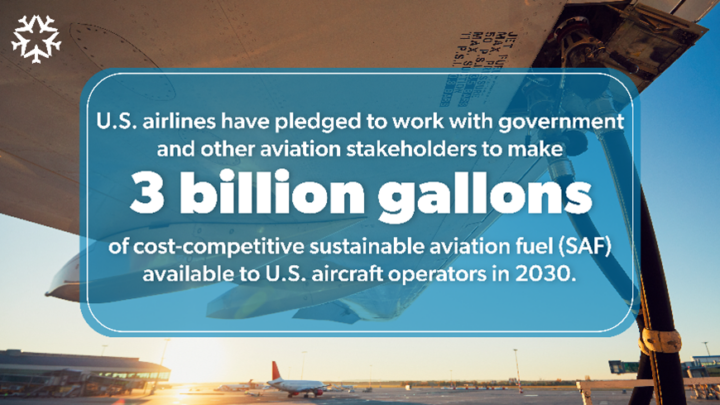
Since then, Alaska Airlines, American Airlines, British Airways, Finnair, Japan Airlines, and Qatar Airways announced in July 2022 that they plan to purchase up to 200 million gallons of ethanol-based SAF per year over five years from renewable fuels producer Gevo.
Process Overview
- Feedstock Preparation: Industrial hemp is harvested, with the tops used for CBD oil extraction and the stalks processed for gasification. The CBD Oil, represented by an NFT, minted at the time of CBD Oil production is offered on the digital marketplace, the revenue here, in this one process, covers the agricultural costs completely.
- Gasification: The more or less free feedstock is then prepared, and subjected to high temperatures in a plasma gasifier, breaking it down into syngas.
- Energy Recovery: Syngas are used to generate electricity, heat, and synthetic fuels, all of which have a negative carbon footprint.
Some of the potential products derived from the Gasification of hemp biomass
Activated Biochar: Soil Regeneration (higher crop yields with less fertilizer input) Water retention (up to 40% savings on irrigation costs)

Carbon Capture & Sequestration (CCS) (up to 3.26 tons of CO2/ton of Biochar)
Activated Carbon: Water & Air filtration Gold extraction Medicinal Personal hygiene products
Pyroligneous Acid (PA) (aka Wood Vinegar): Wood Vinegar: Organic bio-stimulant/fertilizer Organic pesticides Organic herbicides
Guaiacol Applications: Essential Oils Flavoring for Whiskey & Roasted Coffee
Furfural Applications: Inks Plastics Antacids Adhesives Nematicides Fungicides Fertilizer Flavoring compounds Processed food & beverages such as Coffee & Grain bread
Non-petroleum based, chemical feedstock, Specialized chemical solvents Polymers Fuels Resins Coatings Herbicides
Propanoic Acid Applications: Preservation & flavoring of cheese & baked goods e.g. bread & tortillas
Antifungal & Antibacterial in agricultural & livestock operations Surface sanitizer of grain storage spaces Acetic Acid Applications: C4L production (3rd party bio-stimulant)
Vinegar (household, etc. Liquid smoke for food flavoring such as meat, fish, cheese & other foods
Maitol/Mannitol Applications: Mannitol is a diuretic that is used to reduce swelling and pressure inside the eye or around the brain Mannitol is also used to help your body produce more urine. This medicine is used in people with kidney failure, to remove excess water and toxins from the body.
Vanillic Acid Applications: The analeptic drug Etamivan Modecainide Brovaneine Vanitiolide Vanyldisulfamide
Eugenol Applications: Used as a flavor or aroma ingredient in teas, meats, cakes, perfumes, flavorings and essential oils Local antiseptic and anesthetic Eugenol can be combined with zinc oxide to form zinc oxide eugenol which has restorative and prosthodontic applications in dentistry.
Pyrocatechol Apps: Used as a reagent for photography, dyeing fur, rubber and plastic production, and in the pharmaceutical industry Gas application: Renewable Energy / Electricity.

Typically output will consist of 30 – 60% Carbon Monoxide (CO), 25 – 30% Hydrogen (H2), 5% Methane (CH4); 5 – 15% Carbon Dioxide (CO2); and, lesser amounts of water vapor.
Carbon Monoxide (CO) Green Hydrogen (H2) Combined & refined into Sustainable Aviation Fuel (SAF) Hydrocarbons Nitrogen (N) Combined & refined into Nitrogen Fertilizer Methane (CH4) But we can also do the following: Green Hydrogen (H) Combined & refined into Green Ammonia Nitrogen (N) • Methane is used to produce Methanol. Methanol and its derivative products such as acetic acid and formaldehyde created via chemical reactions are used as base materials in acrylic plastic; synthetic fabrics and fibers used to make clothing; adhesives, paint, and plywood used in construction; and as a chemical agent in pharmaceuticals and agrichemicals.
We also need to generate electricity to operate our pyrolysis, bio-refinery, and activation Plants. This generation of renewable energy/electricity allows us the opportunity to produce additional Green Hydrogen by adding an electrolyzer.
Even though we produce a small amount of CO2 we are still very much carbon-negative, but if we run the CO2 through the fields to enhance growth and yield.
Quantifying efficiency gains in the Carbon-Consuming Circular Economies (CCCE) model involves measuring improvements in various processes and outputs. Here are several approaches to quantify these efficiency gains:
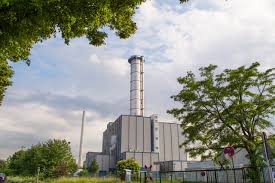
Plasma Gasification Efficiency Metrics:
Cold Gas Efficiency (CGE): Measures the efficiency of converting biomass into syngas.
Energy Recovery: Percentage of energy recovered from the syngas.
Calculations: CGE: CGE=(Energy content of syngasEnergy content of feedstock) ×100
CGE=( Energy content of feedstock Energy content of syngas)×100
Energy Recovery: Measure the total energy output (electricity, heat) against the energy input.
Plasma Gasification of 20 to 30 tons of Hemp daily. Hemp Hurd Gasification provides a cold gas efficiency of about 58% and a syngas heating value of about 4.4 MJ/Nm3 obtained from the model with 10% of biomass moisture and equivalence ratio ER = 0.3; these values are in line with literature data about fixed bed gasification. Model simulations varying ER in the range 0.2-0.4 and varying M in the range 0- 20% showed a good dependency of the gasifier with the ER value.
The tests show a strong dependency of the gasifier output with the biomass moisture and the equivalence ratio (ER). Lower moisture is better in terms of efficiency, syngas HHV, and tar production. However, a moisture value lower than 10% is acceptable in industrial applications and does not create sensible inefficiencies. ER value is crucial to have a good cold gas efficiency, in fact for ER = 0.3 the best efficiency of about 59.5 % was estimated. This value is quite common for fixed-bed gasifiers that are designed to work in precise conditions.
https://unihemp.dhitech.it/wp-content/uploads/2021/03/2CV.3.22_paper.pdf
EQUILIBRIUM MODELING OF HEMP HURD GASIFICATION Simone Pedrazzi1, Nicolò Morselli1, Marco Puglia1, Filippo Ottani1, Massimiliano Parenti1 1 BEELab (Bioenergy efficiency laboratory), Department of Engineering “Enzo Ferrari”, University of Modena and Reggio Emilia, Via Vivarelli 10/1 – 41125 Modena, Italy.
2 DLT
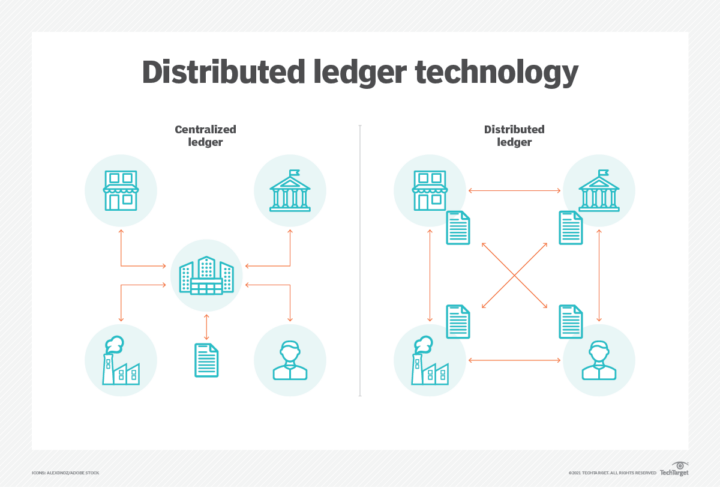
Digital Ledger Technology (DLT): Enhancing Transparency and Efficiency
DLT, including blockchain technology, provides a secure and transparent way to manage transactions and track resources within the CCCE framework.
Agricultural inputs, like moisture, nitrogen, and sunlight are monitored in an IOT Network that includes the entire campus, including the agricultural area. AI is used here to predict the outputs at harvest. Imputs and actions from the planting of hemp to the sale of syngas, are recorded on a decentralized public ledger.
When outputs like Syngas, or CDB Oil are produced, they are represented by an NFT, which is created at the point of creation. This NFT contains the Agricultural inputs and output data that was tracked for the harvest that was just processed.
This NFT, with all the supporting Agricultural data, showing a negative carbon impact is offered on a digital global marketplace. The green outputs can only be purchased on this marketplace. The outputs can be bought with the CCCE Utility Token.
Jobs created here are paid directly, daily, into the worker’s digital wallet. From this wallet, other digital currencies can be purchased, and goods and services can also be purchased for Utility Tokens in the network. This fungibility is supported by the value of the NFT which was sold for FIAT or other digital currencies which is then held by the marketplace.
More value must be created than it costs to produce that value. Since this is a digital workflow, AI is employed here to increase efficiency (Positive Feedback Loops).
Utility Token System
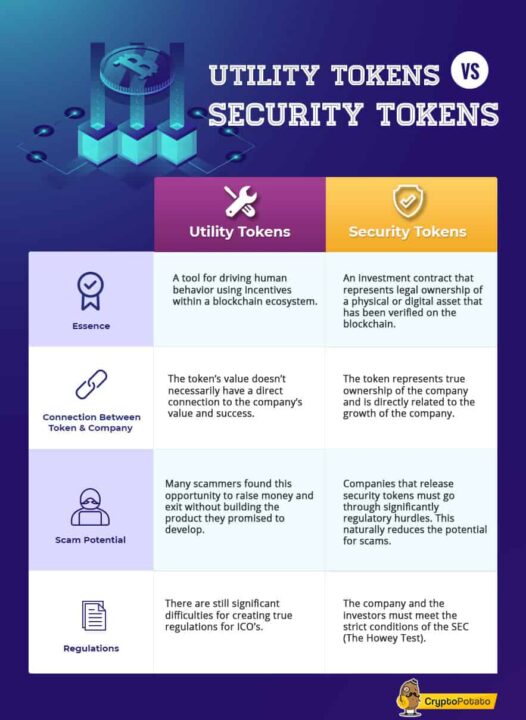
- Utility Tokens: Local utility tokens are used for transactions within the CCCE campuses, promoting economic activity and reducing reliance on external currencies.
- NFTs for Product Tracking: Non-fungible tokens (NFTs) are used to certify the origin and production processes of goods, ensuring transparency and boosting consumer confidence.
Digital Ledger Technology (DLT) Efficiency Metrics:
Transaction Speed: Time taken to complete a transaction.
Cost per Transaction: Reduction in transaction costs.
Calculations: Transaction Speed Improvement: Compare the average transaction time before and after implementing layer-2 solutions.
Cost Reduction: Calculate the percentage reduction in transaction fees.
Distributed computing security “Can it be secure?”
In the distributed environment, when the system is connected to a network, and the operating system firewall is active, it will take care of all the authentication and access control requests.
Several traditional cryptographic approaches implement authentication and access control. The encryption algorithms such as Rijndael, RSA, A3, and A5 are used to provide data secrecy.
Some of the key distribution techniques such as Diffie Hellman key exchange for symmetric key and random key generation (LCG) technique are used in red-black tree traversal which provides the security of the digital contents.
3 Comprehensive Communications Infrastructure

A robust communications network is essential for the seamless creation and operation of CCCE campuses. This is accomplished through a Wireless AdHoc Autonomous Massive Network (WAAMNET)
WAAMNET utilizes LTE-4 and LTE-5 technologies to provide reliable internet connectivity, enabling smart networks that support education, healthcare, and economic activities.
It also includes non-ARIN Storage using Named Data Networking, an Internet Architecture research project supported by the National Science Foundation, which has received over $13.5M in funding from NSF from 2010-2016.
UCLA Professor and Jonathan B. Postel Chair in Computer Science Lixia Zhang led the project along with Internet Hall of Fame inductee and UCLA adjunct professor Van Jacobson. Van Jacobson is an American computer scientist, renowned for his work on TCP/IP network performance and scaling. He is one of the primary contributors to the TCP/IP protocol stack—the technological foundation of today’s Internet.
The NDN project is a new fundamental architecture for the global Internet that leverages thirty years of empirical evidence of what has worked (and what has not).
It aims to provide a practically deployable set of protocols replacing TCP/IP that increases network trustworthiness and security, addresses the growing bandwidth requirements of modern content, and simplifies the creation of sophisticated distributed applications.
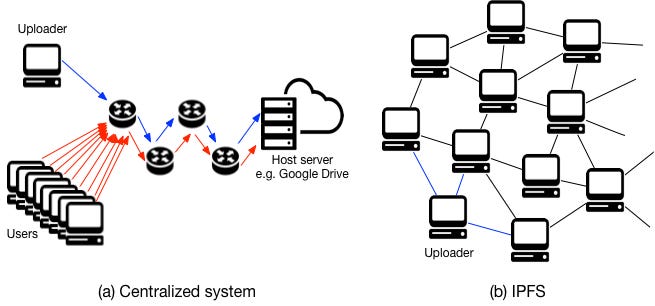
The network also offers local content, produced and stored locally, then distributed using The Inter Planetary File System. https://ipfs.tech/ – IPFS powers the creation of a diversely resilient network that enables persistent availability — with or without internet backbone connectivity. This means better connectivity for the developing world, during natural disasters, or just when you’re on flaky coffee shop wi-fi.
IPFS is a DNS replacement that finds information by its contents, not its location this is called content addressing (Kinda like Named Data Networking, but still different).
With IPFS, you don’t just download files to network storage, IPFS also helps distribute them. When your friend a few blocks away needs the same Wikipedia page, they might be as likely to get it from you as they would from your neighbor or anyone else using IPFS (Napster except much more disruptive to more industries).

Some data will be stored using LDNS, a DNS library that facilitates DNS tool programming. https://www.nlnetlabs.nl/projects/ldns/about/LDNS
Translations in LDNS can come from any database. Even a distributed ledger database (Blockchain). If you use a permanent, distributed ledger database to record your DNS, you have persistent Lifetime DNS, when the payment is made to record it, then that’s it, no payments for a lifetime. Domain Registrars like Go Daddy, have become so 1990s.
And you can use multiple storage mediums to store a single document, which can only be assembled through your LDNS instance which may only be in a single node. You can’t pen-test a remote local access-only node. Security is built into the platform. Node communications are all encrypted and Quantum Resistant, and could be Quantum Proof.

These are deployed within a Mesh Network – A mesh network is a local area network topology in which the infrastructure nodes (i.e. bridges, switches, and other infrastructure devices) connect directly, dynamically, and non-hierarchically to as many other nodes as possible and cooperate to efficiently route data to and from clients.
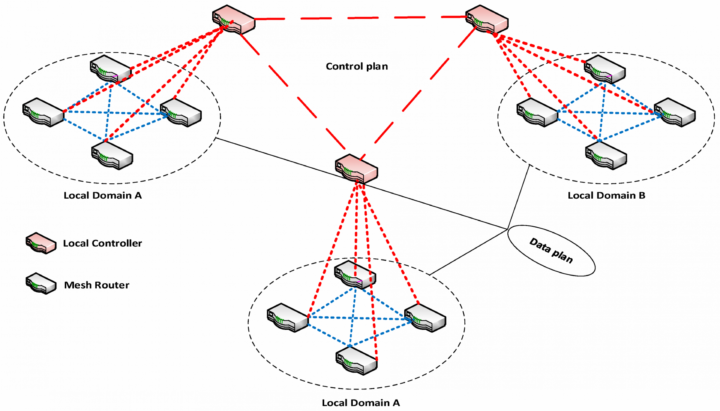
This lack of dependency on one node allows for every node to participate in the relay of information. Mesh networks dynamically self-organize and self-configure, which can reduce installation overhead. The ability to self-configure enables the dynamic distribution of workloads, particularly in the event a few nodes should fail. This in turn contributes to fault tolerance and reduced maintenance costs.
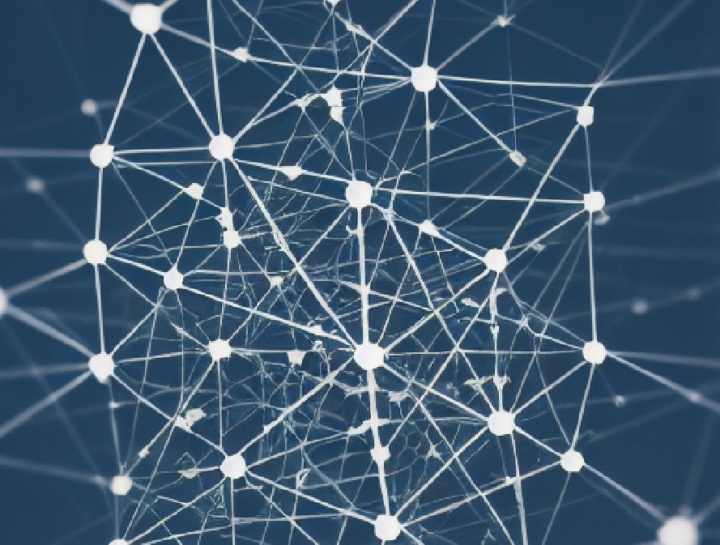
Some data is exchanged using Zero-knowledge proof – In cryptography, a zero-knowledge proof or zero-knowledge protocol is a method by which one party (the prover) can prove to another party (the verifier) that a given statement is true while the prover avoids conveying any additional information apart from the fact that the statement is indeed true.
The essence of zero-knowledge proofs is that it is trivial to prove that one possesses knowledge of certain information by simply revealing it; the challenge is to prove such possession without revealing the information itself or any additional information.
All of this rides on a unique LTE-4, Mobile Data Network, In telecommunications, Long-Term Evolution is a standard for wireless broadband communication for mobile devices and data terminals, based on the GSM/EDGE and UMTS/HSPA technologies.

It increases the capacity and speed using a different radio interface together with core network improvements. The LTE data structure remains consistent Globally. We leverage the Catagory 18 LTE modem’s LTE data access capabilities. The modem is available on the Jungle website. They are carrier-specific, and if your carrier goes down, you down. There are carrier fallback options that deliver 3 or 4 carrier options, which if one goes down, move to the next (automatic failover). These options are currently providing fiber speeds (1 gig or better) for 50 cents a gig. Miners sell that bandwidth for 1 dollar a gig (50% margins).
This is configured and managed using An intelligent eSIM platform This goes beyond the initial SIM activation. It’s primarily used to manage a device and customize variables that greatly enhance an IoT device operator’s control of a subscriber over the long term. The key difference between a standard eSIM platform and an intelligent eSIM platform starts with the concept of “control”. That is the ability of device operators to determine how and where they get connected for the duration of a device’s lifespan.
Access more networks (i.e. AT&T, T-Mobile, and Verizon in the US)
Access more network types (i.e. 3G, 4G, 5G, NB-IoT, CAT-M)
Access more device types (i.e. devices that take a standard SIM or embedded SIM) Seamlessly deploy devices in more countries around the world. Control devices over the long term with enhanced feature sets
This provides the infrastructure for our CCCE AI enviroment.
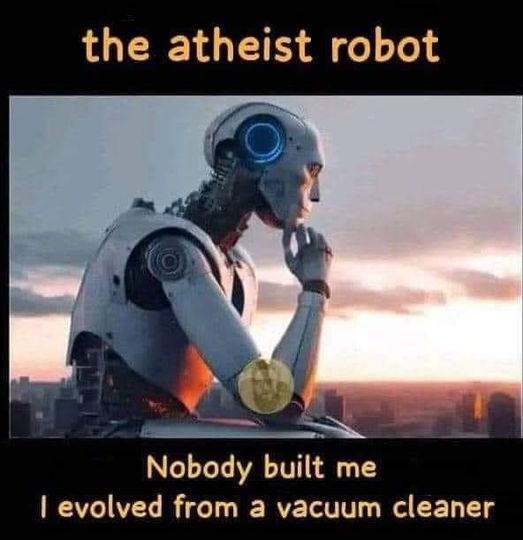
CEOs are increasingly discussing Generative AI in their earnings calls, with 75% believing that competitive advantage hinges on having the most advanced AI, as per the IBM Institute of Business Value report. However, the idea of having the “most advanced generative AI” is rapidly losing significance, given AI’s trajectory towards becoming a standard offering accessible to all CEOs.
What truly matters are the dynamics of your competitive landscape, the factors driving your competitive edge, and how AI can amplify these advantages while mitigating those of your competitors.
In the evolving landscape of AI, adapting strategies to harness its potential in shaping competitive ecosystems will be crucial for future success.
For instance, here the ChatGPT: dialogue format makes it possible for ChatGPT to answer follow-up questions, admit its mistakes, challenge incorrect premises, and reject inappropriate requests. The technology supporting human interaction at any point in a Campus, must be seamless and unobtrusive across platforms. By knowing when and where to automate touchpoints and balancing digital with human elements, service & experience leaders can facilitate frictionless digital experiences for their customers.
World-class CX cannot be achieved without an extensive, modernized process for collecting, analyzing & utilizing data (feedback loop). From executing Voice of the Customer programs to leveraging AI & Data Analytics, holistic data-driven strategies will hold the key to success (spoiler alert, the positive feedback loop).
Communications Infrastructure Efficiency Metrics:
Bandwidth Utilization: Measure the effective use of available bandwidth.
Latency: Measure the time delay in data transmission.
Calculations:
Bandwidth Utilization:
Utilization Rate (Data Transmitted Total Bandwidth Available) × 100
Utilization Rate=( Total Bandwidth Available Data Transmitted )×100
Latency Reduction: Compare the average latency before and after implementing new technologies.
4 Sustainable Agriculture: Integrating Industrial Hemp Cultivation

Hemp is a versatile and sustainable crop that plays a crucial role in the CCCE model. It not only provides feedstock for plasma gasification but also contributes to carbon sequestration and soil health.
Organic produce is used as a rotation crop and is harvested from 30 acres each day, this is an additional profit center. This produce would be wholesaled to local markets, and be used in homes, restaurants, and campus cafeterias.

The harvest of Hemp seed oil from 30 acres daily is a profit center, which in modeling, provides enough revenue to pay for the entire agricultural process. Several levels of processing can be eventually brought in-house, adding even further to the community value.
One acre of hemp can produce 2.5 to 3 tons of Hemp Biomass when Harvested. The Top is pressed into the CBD Oil and the stalk becomes industrial fiber or feedstock.

The Tops of the plant are harvested and pressed to make hemp seed oil. This oil sells retail for over $400 per gallon. This oil is clear and colorless, with little flavor. It is primarily used in body care products. Industrial hemp seed oil is also used in lubricants, paints, inks, fuel, and plastics. Hemp seed oil is used in the production of soaps, shampoos, and detergents. Making high-quality CBD oil takes special equipment, expertise, and top-grade hemp plants.
The oil has a 3:1 ratio of omega-6 to omega-3 essential fatty acids. About 49% of the weight of hempseed is an edible oil that contains 76% as polyunsaturated fat, including omega-6 fatty acids such as linoleic acid (LA, 54%) and gamma-linolenic acid (GLA, 3%), and omega-3 fatty acids such as as as as alpha-linolenic acid (ALA, 17%) and stearidonic acid (2%). Both LA and ALA are essential fatty acids.
From a hemp agriculture perspective, CBD oil is also one of the most profitable hemp products It takes relatively little hemp to produce a large amount of oil, and as demand for CBD oil continues to grow, so does the price farmers can get for their hemp. One acre of hemp can yield an averagegege of 700 pounds of seed, which in turn can be pressed into, about 22 gallons of oil and 530 pounds of meal.
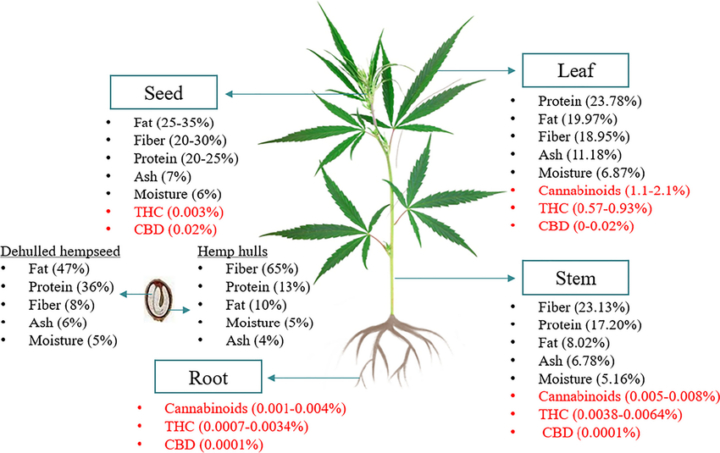
Agricultural Practices
- Rotational Cropping: Alternating hemp with organic produce to maintain soil fertility and reduce pest pressure.
- Daily Operations: Planting and harvesting on a rotational basis to ensure continuous production and employment.
Sustainable Agriculture Efficiency Metrics:
Yield per Acre: Measure the crop yield per unit area.
Resource Utilization: Efficiency of water, nutrient, and pesticide use.
Calculations: Yield Improvement: Yield per Acre = Total Yield
Acres Planted
Yield per Acre=
Acres Planted
Total Yield
Resource Efficiency: Measure the amount of resources used per unit of yield (e.g., gallons of water per pound of hemp).
5 Education, Healthcare, and Housing Systems
A holistic approach to community development is essential for the success of CCCE. This includes accessible education, comprehensive healthcare services, and sustainable housing solutions.
Education
- WEB3-Based Educational Platforms: Utilizing digital platforms to provide state-of-the-art education tailored to local needs.
- Local Curriculum Development: Ensuring that educational content is relevant and culturally appropriate.
In this process, it is important to keep in mind that under the principle of self-determination, sovereign nations should determine what their priorities are and what kinds of projects they welcome in their homelands.
Sovern Nation should have the capability to develop a curriculum conducive to their culture and customs. Sovern Nations should be able to access these services, in their communities, and the services should be delivered by people in the community.
Healthcare
- Digital-First Healthcare Systems: Leveraging technology to provide preventive and primary healthcare services.
- Partnerships with Local Providers: Collaborating with local healthcare providers to deliver services within the community.
Solve.Care
CARE.PLATFORM – BUILT FOR SELF-CUSTODY OF HEALTHCARE
Built for Enterprise Adoption
Built for Consumer Use
Built for Real-world Utility
Housing
- Rammed Earth Construction: Using sustainable materials like rammed earth to build affordable, durable, and energy-efficient homes.
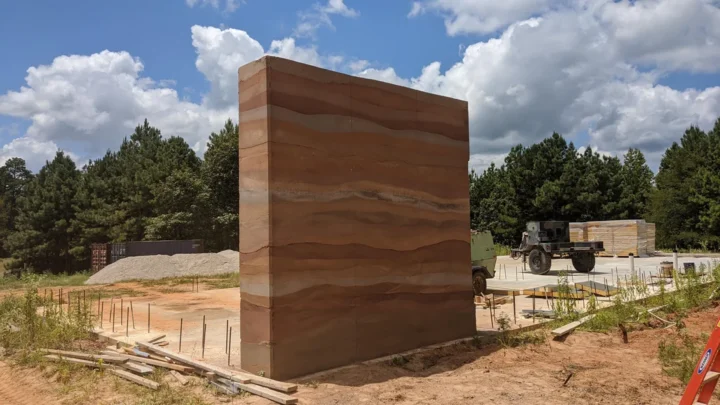
- Local Implementation: Engaging local communities in the construction process to create jobs and build capacity.
A Case Study
It is difficult to justify a technological shift, in places that have sufficient technology. Yet, newer technologies scale at near zero marginal cost in areas where there is no incumbent technological Infrastructure.
Uganda provides a vast horizon filled with thousands of populated areas, with little, or in many cases, no incumbent technological infrastructure. This project looks to fill those areas with opportunities.
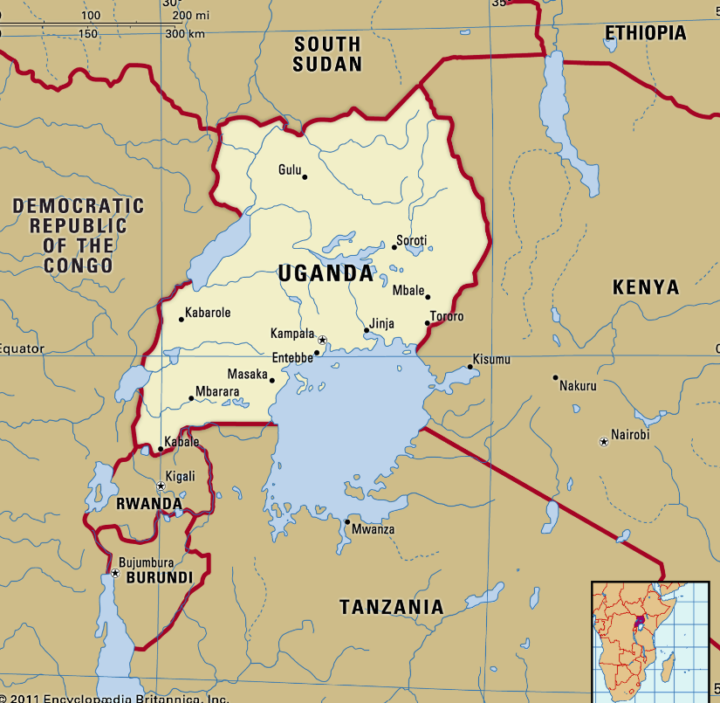
Over the last 8 months, a small team has gathered in Uganda. They are very interested in establishing 100 CCCE campuses in Uganda by May 2027, each providing 250 well-paid jobs and the infrastructure needed to support the families of these employees.
We currently have a team, ready to go, and a Communications infrastructure in place.
Team membership includes Ugandan Leadership, Local Government officials, an NGO based in Uganda known as ESSI, as well as officials in various other technology organizations. The team is operational and bootstrapped.
This project aims to create over 25,000 new jobs and foster sustainable development across the country.
Key Partners
- Environment and Social Safeguards International (ESSI): A Ugandan NGO dedicated to environmental protection and community development.
- TriFi Uganda: Providing the communications infrastructure needed for the project.
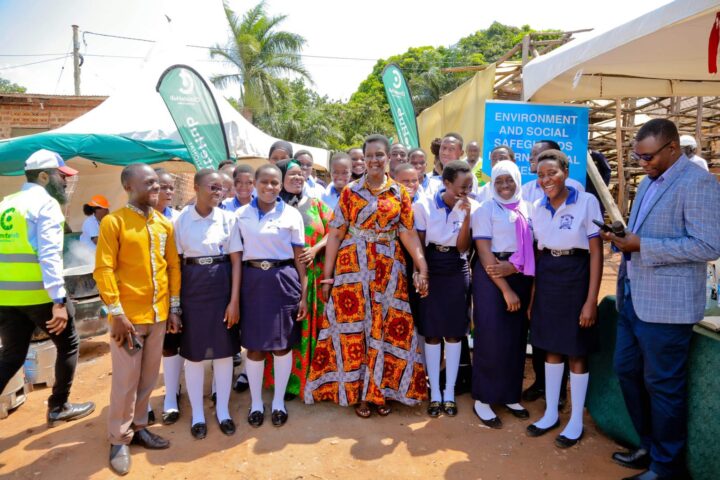
Environment and Social Safeguards International (ESSI) is a registered non-governmental organization in Uganda, formed in 2019 ESSI’s mission, vision, and goals align with the global objectives of poverty eradication, climate, and environmental protection, and prosperity for all, with a specific focus on climate change mitigation (SDG No. 13) and clean and affordable energy (SDG No. 7).
ESSI collaborates with local government structures, communities, municipal councils, civil society, the public, and private sectors, environmental groups, and religious sects to build commitment and consistency toward environmental conservation and justice.
ESSI is dedicated to promoting community development through environmental safeguarding to improve quality of life while respecting cultural values.
ESSI implements high-impact and quality thematic priority areas such as forest restoration and biochar energy development using biodegradable waste/mass. These initiatives are carried out through research and policy analysis, advocacy, consultancy, awareness raising, capacity building, partnerships, and practical efforts to enhance conservation and reduce environmental and social hazards. This approach maximizes development interventions and combats the effects of climate change.
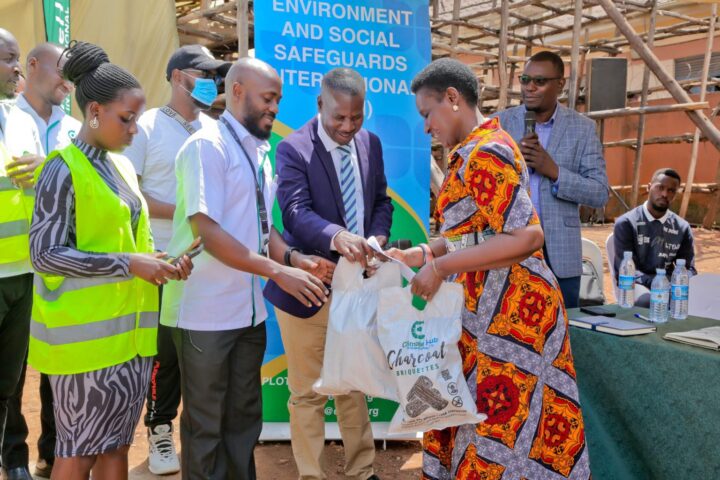
More information about ESSI and its current operations may be found on its website at https:/evssi.org
The goal here is 100 Campuses in 24 months each with 250 well-paid jobs. This represents over 25,000 new full-time equivalent jobs created, in 100 communities. And the infrastructure necessary to support those families. We also have a project in Cameroon, with 270 locations discussed in other documentation. We welcome questions regarding potential locations.
ESSI Uganda’s Main Goal 100 Campuses by May of 2027
250 full-time equivalent jobs on each campus.
25,000 new jobs and the infrastructure necessary to provide, education, Physical Wellness, Mental Wellness, and Housing, for the families of those employees.
On any Campus every day there are 2 plantings and 3 harvests on 30 acres. Two 30-acre parcels go into planting. 30 acres of Industrial Hemp, and for a rotation crop, 30 acres of Organic Produce is planted.
On that same day, 30 Acres of Organic Products are harvested, 30 acres of the top 2 feet of the plant are harvested for the CBD oil, AND 30 acres of industrial hemp shaft is harvested, then sent to the Plasma Gasification plant.
In this manner, this system provides for 2 Plantings 3 Harvests each day.
Some results –
Agriculture jobs
Transportation and Logistics jobs
Plasma Gasification plant jobs
CBD Oil Processing jobs
CBD Oil Refining and pharmaceutical production jobs
Education System jobs to Teach new hires
Healthcare provider jobs
Housing providers jobs
Other jobs
1. Value Add here we are using plasma Gasification.
2. Communications – Here we are using an LTE 4 Global Network in partnership with TriFiWireless.com and TriFi Uganda.
3, Education – Here we are evaluating, Meta Fusion a WEB3-based educational platform, Spectrum Transformation Services – Closing the Digital and Practical Skills Gap for Social Impact in East Africa, Khan Academy, Accredited Christian Education ACE, ABC Mouse, and many others.
4. Healthcare – Here we are evaluating Solve.Care, a digital-first health care system, and beginning to partner with the Far Superior Group for the United States.
5. Housing – Local NGO, Rammed Earth, Smart City Technology,24 volt DC, primarily.
It is important to note the first division or Value Add needs to create enough value to overcome friction in the digital system, as well as provide for the build-out and operation of the following 4 Divisions, Communications, Education, Healthcare, and Housing.
In this use case as the value add we are using a single plasma Gasification plant using industrial hemp as the feedstock.
The plasma Gasification plant consumes 20 to 30 tons of feedstock daily
This produces hundreds of gallons or more thousands potentially of Aviation fuel with a carbon-negative footprint. The variables revolve around the quality and consistency of feedstocks, the technology employed, and what other products are being harvested. Other products such as Mega Watts of Electricity, Waste Heat for additional industrial processes, Bio-Char, Synfuel, wood Vinegar, and more.
Multiple potential profit centers on each campus contribute to the local economy. A typical campus creates tens of thousands a day in Payroll plus twice that in revenue when developed fully.
Good jobs are the priority for this project and not EBIT Range or profit to remote investors. There are many ways to configure a campus. This example is designed to create Economic Opportunity.
A typical Economic Opportunity Campus takes 6 months to spin up, creates 250 Sovern Nation Jobs, provides renewable energy to the community, and access to the digital economy for e-commerce and education.
Main Features
Sovern Nation Produced Verifiably Green Energy
Sovern Nation Ownership
Located in a Sovern Nation
Sovern Nation Employees
Sovern Nation Run
Sovern Nation Utility Token
Hemp Agricultural Operations 7,000 Acres minimum
The Majority is delivered by the community in the community, with the Community Benefiting primarily
To start Agricultural activities we are going to need land. This campus needs to be square. A circle scribed in the middle of the square is used for agriculture and gasification. Feedstocks are harvested and transported to the center of the square. Here we locate the plasma Gasification operations. This is best for transportation and logistics.
To find the required size, you must first know how many Harvests there are annually. With industrial hemp, there are variables like climate and water supply. The size is derived by multiplying the number of days in the growing season by the number of acres harvested daily.
Two seasons would be 180 days times 30 acres a day is 5,400 acres. 7,000 acres allow for roadways, right-of-way, and other commercial services. 3.73 miles by 3.73 miles, provides 7,000 acres of Agriculture, along with room for transportation and Gasification operations.
Tokenomics
The value of the Utility token is fungible outside of the network to FIAT and other digital currencies. This same Utility token provides frictionless transactions in the network.
Fungibility comes from a marketplace. Here utility tokens are exchanged for FIAT, or digital currency. Marketplace liquidity comes from outside organizations purchasing products in the same marketplace.
This system uses NFT which are generated at the point the product is produced. Syn Gas for example.
Plasma Gasification of Hemp feedstock provides 500 gallons of syn fuel which is tracked and registered to an NFT.
The origin of the hemp feedstock, to this point, has been tracked using the IOT network provided by Trifi Uganda. This information is recorded on the NFT. This certifies the origin and certifies the energy that went into the production, offering proven Green Aviation Fuel, that can be purchased on a Global Marketplace.
This NFT is offered on the marketplace and is purchased by an airline as part of its operations and its commitment to green energy.
Workers are paid in Utility Tokens which are used locally, or exchanged for other currency.
Education, Wellcare, Healthcare, Communication, and Housing, can be purchased with Utility Tokens, locally.
Capitalization would allow the current bootstrapped operations to scale. Capital would initially go toward forming a legal entity, and funding that entity. Attention would then turn to scaling the current feedstock conversion, and Public WIFI operations. Then to Plasma Gasification Equipment and Land.
Overview 5 Separate Divisions with some detail added
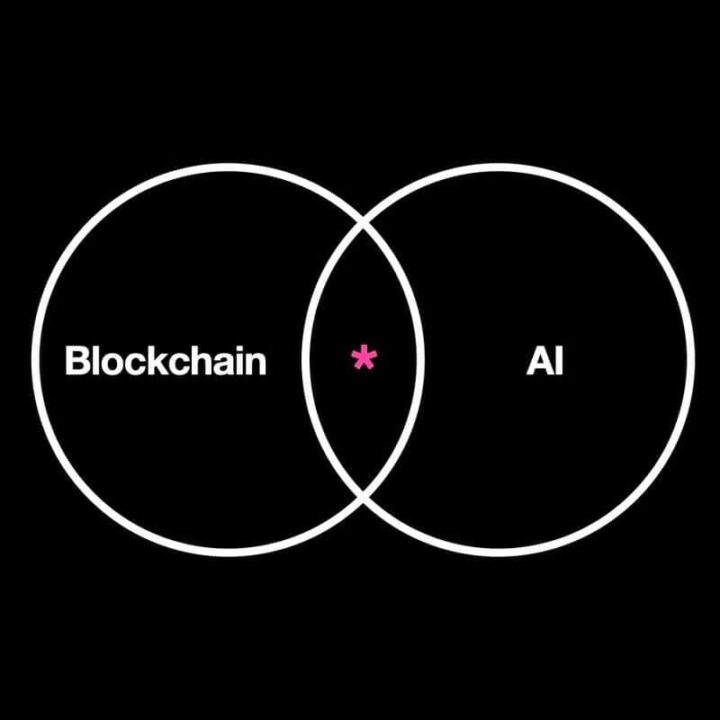
Communications – Here we are using an LTE 4 Global Network in partnership with TriFiWireless.com and Trifi Uganda. This network will natively enable true WEB 3 Services, such as Proof of Identity at Zero Marginal Cost.
Here IoT, WEB3, Voice, and Data will be synchronously available on any portion of a Campus. Availability is provided by the TRIFI Uganda Wireless, AdHock, Autonomous, Massive Network (WAAMNET) and Named Data Networking of Things. This provides the infrastructure for WEB3. And please, Web3 is not on the same network as My Space. So if you are looking for it there, well there is your problem. It all starts with a Network of Networks. All are connected in an NDN.
NDN has three core concepts that distinguish NDN from other network architectures. First, application name data and data names will directly be used in network packet forwarding; consumer applications request desired data by its name, so communications in NDN are consumer-driven.
Second, NDN communications are secured in a data-centric manner, that is, each piece of data (called a Data packet) will be cryptographically signed by its producer, and sensitive payload or name components can also be encrypted for privacy; in this way, consumers can verify the packet regardless of how the packet is fetched.
Third, NDN adopts a stateful forwarding plane where forwarders will keep a state for each data request (called an Interest packet) and erase the state when a corresponding Data packet comes back; NDN’s stateful forwarding allows intelligent forwarding strategies and eliminates loops (Blockchain DNS – Local NDN).
Wireless AdHock Automious, Massive Network (WAAMNET)
Digital Assets Embedded in Nodes – Nodes are AdHock and member-created and curated and Data Networking is a proposed Future Internet architecture inspired by years of empirical research into network usage and a growing awareness of unsolved problems in contemporary Internet architectures like IP.
Equipment – Off the shelf Catagory 18 LTE modem
In telecommunications, Long-Term Evolution is a standard for wireless broadband communication for mobile devices and data terminals, based on the GSM/EDGE and UMTS/HSPA technologies. It increases the capacity and speed using a different radio interface together with core network improvements. LTE is the upgrade path for carriers with both GSM/UMTS networks and CDMA2000 networks.
The different LTE frequencies and bands used in different countries mean that only multi-band phones can use LTE in all countries where it is supported. The LTE data structure remains consistent Globally. We leverage the Catagory 18 LTE modem’s LTE data access capabilities.
Standalone nodes depend on traditional HTTP protocol for communications and use traditional HTTP for interconnection. Since this is an AdHock network, nodes connected directly to one another can exchange digital assets, outside of the traditional HTTP protocol and network, and therefore an alternative DNS will be employed here. The DNS will be persistent, and the DNS database will be a public chain.
The TriFi Wireless Global Ambient Wifi Network provides a plug-and-play solution that provides WIFI access to any WIFI-enabled device globally. This Internet access gateway is plenty enough to manage a public Internet service. Features include multiple login modes, voucher design, and printing, and PayPal credit card billing. Utility Token Payments are available. A free cloud account is included for remote management and failure monitoring of all devices in your network. AC power is Hardware owner-supplied. Just plug and Play, Globally.
Next, we will describe in detail, this smart network, as we introduce the WAMNET, a Wireless, Autonomous, Massive Network, using alternative persistent DNS, and persistent storage.
WAMNETs are created by miners who collect economic rent on this platform. This is not the same network you use to access MySpace.
This is more of a platform, and platforms provide value, members access this value using utility tokens, and they access this value in a peer-to-peer environment becoming known as W3.
Members access value that is native to the platform, and sometimes, available at zero marginal cost. For instance, Digital CX Platform As A Service, Imputed KYC, AML, or Proof of Identity (POI), rural infrastructure for digital freelancing (GPD for recovery), Gain company assets through Federal Grants, Infrastructure for renewable energy, autonomous transportation, and Global, peer-to-peer commerce.
well. Nodes on your network are distributed and use technology, like IPFS, and LDNS.
Nodes are local, and owned by the miners. The miners provide W3 services to the platform and collect economic rents when members use the platform
What services you are asking for?
Persistent Lifetime DNS – Multiple ways to do this –
Network Security – This is a Distributed Network –
Know your customer, Anti Money Laundering, Proof of Identity as a Service –
Nodes can connect to verify the single instance of an identity network-wide, which provides proof of identity (POI).
With POI comes imputed KYC and AML. KYC, AML, as a service (KYC,AML,AAS) –
In network, Legal, Regulated peer-to-peer trading of Securities, Automobiles, Homes, Digital Assets, NFT, Payroll, Payments, and anything that can be digitized (NFT, Digital Twin)
Peer to Peer, Member to Member. – services provided at near Zero Marginal cost to the platform –
Transportation in the network provided by Autonomous Transportation tracked on the network (Lease a Tesla) – Zero Marginal Cost Transportation.
Access to shelter and food, immediate settlement both ways, and at Zero Marginal cost to the platform.
Network – Wireless AdHock Massive Network (WAMNET)
Digital Assets Embedded in Nodes (Distributed)
Nodes are AdHock and member-created and curated
Node provides data at 1 dollar a gig to members (50% margin)
pFsense community edition Gateway
SAN devices
IPFS Nodes
LDNS Nodes
Nodes can be interconnected via encrypted node-to-node connections.
Node operators become the miners in this paradigm.
They charge 1 dollar a gig for access to the network data, which includes a tunnel to the outside internet. Assets served in the node or brought into the node are published and served (often at zero marginal cost) for 1.00 per gig, add Hoch, across the platform, and outside mobile data is provided, for 1.00 a gig in a network, similar to maybe Hologram, iota, Google Cloud IoT Core, and others.
Since this is an AdHock network, nodes connected directly to one another can exchange digital assets, outside of the traditional HTTP protocol and network, and therefore an alternative DNS could be employed here. The DNS could be persistent, and the DNS database could be persistent.
If a network has a purpose and a place, you can add value to your network. Add value to your network and it becomes a platform or a “network of networks”. Platform=Network of Networks
Successful Platforms= Network of Networks with a Place and a Purpose
In this way, members find value in the platform, and other platform participants, provide that value member-to-member or peer-to-peer.
Platforms are probably multiple networks providing hyper-relevant value to their membership.
Platforms solve relevant social issues and supply social proof at near-zero marginal cost. Along with Persistent Lifetime DNS, Network Security, KYC, AML, as a service (KYC, AML, AAS), In network, Legal, and Regulated peer-to-peer transactions, immediate settlement both ways – Arbitrage might be a condition of membership might not. Platforms scale without any investment from the platform. W3 platforms benefit from a positive feedback loop which amplifies these ecosystems further. At Zero Marginal cost to the platform, which Brings Value to Membership.
This was described in 2019 when wireless communication technologies were enabling pervasive connectivity between objects.
Internet of Things (IoT) Lab, Department of Engineering and Architecture, University of Parma, Parco Area delle Scienze 181/A, 43124 Parma, Italy
- Author Future Internet 2019, 11(4), 99; https://doi.org/10.3390/fi11040099
These communication systems, involved in the so-called “network of networks” Internet of Things (IoT), will eventually allow humans to interact with billions of devices, including sensors, actuators, services, and other connected objects, in an Internet-like way, with a forecast of more than 40 billion connected (with short-range radio communication technologies) “things” by 2022 [1] (and more than 125 billion by 2030 [2]), and more than 2.7 billion Low Power Wide Area Network (LPWAN) connections by 2029.
In this context, connected things are generally defined as Smart Objects (SOs) and, thanks to the IoT, dynamically integrated into several scenarios, such as smart industries, smart cities, smart agriculture, smart health, etc. Each application area has specific requirements to be taken into account, thus having implications for the communication technologies to be considered and, possibly, adopted. In particular, IoT-related wireless technologies developed in recent years are extremely heterogeneous in terms of protocols, performance, reliability, latency, cost-effectiveness, and coverage.
For instance, some of them are designed for short-range radio communications (e.g., Bluetooth and ZigBee), others are more suitable to cover wide areas with very small bandwidth (e.g., Sub-GHz), while others are designed for middle-range communications and high transmission rate (e.g., IEEE 802.11). Moreover, IoT network topologies are generally star- or tree-based, with data collected by groups of sensors and sent to a central collector or border router, to guarantee centralized processing.
The emerging and constantly evolving IoT applications require more complex network topologies, without a predefined hierarchy but can dynamically adapt themselves to changing conditions. In mesh topologies, network nodes are directly and dynamically connected in a non-hierarchical way, thus allowing many-to-many communications (among nodes cooperating) to efficiently route data from a generic source to a generic destination.
In fact, in a WMN each node composing the network can operate both as a host and as a router, relaying packets sent by other nodes when the destination is not in the visibility range of the source. Moreover, mesh networks do not require infrastructure, since they dynamically self-organize and configure themselves, with consequent relevant advantages, in terms of (i) deployment, installation, and maintenance’s overhead and cost reduction; (ii) dynamic workload distribution; (iii) better reaction to node failures; and (iv) easy network topology modification.
The organization of a WMN is generally handled through the definition of a routing policy shared among all nodes, aiming at discovering and determining the best routes, based on different metrics (e.g., throughput, link quality, hops number, etc.) measured on data streams. Therefore, streams of data in WMNs cross all nodes connecting the source and the destination.
Mesh topologies are thus the most attractive alternative to traditional centralized or tree-based network topologies, where nodes are directly linked to a small subset of other nodes, and the links between these infrastructure neighbors are hierarchically organized. While star- and tree-oriented topologies are very well established, highly standardized, and vendor-neutral, in the case of mesh networks the research community and vendors have not yet all agreed on common standards, with the interoperability among devices from different vendors seldom assured. Moreover, comprehensive surveys on available options in the field of mesh networks for IoT are lacking in the literature.
3, Education – Here we are evaluating Meta Fusion a WEB3-based educational platform delivering state-of-the-art courseware for global WEB3 and DLT-based job seekers. Spectrum Transformation Services – Closing the Digital and Practical Skills Gap for Social Impact in East Africa, Khan Academy, Accredited Christian Education ACE, ABC Mouse, and many others.
Education subscriptions are obtained, and educational materials are created and stored locally. This curriculum is then offered Potentially to in-network students gratis. Utility Tokens can be used potentially as well.
4. Healthcare – Here we are evaluating Solve.Care, a digital-first health care and health education system. Specifically, the CARE.PLATFORM. BUILT FOR SELF-CUSTODY OF HEALTHCARE. Built for Self- Self-Custody Healthcare, Enterprise Adoption, Built for Consumer Use, Built for Real-world Utility. The FarSuperior Network has expressed an interest in providing preventative well-care services for USA populations as well.
5. Housing – Local NGO, Rammed Earth, Smart City Technology,24 volt DC, primarily produced from plasma gasification. I could talk about this for days. The bottom line, is better than FHA quality, for around 30 dollars a square foot cost.
Rammed earth is a natural, environmentally friendly material that has many advantages for construction, including:
- Thermal mass: Rammed earth absorbs and stores heat, which can help save energy.
- Strength: Rammed earth is strong in compression and can be used for multi-story load-bearing construction.
- Durability: Rammed earth is resistant to moisture, wind, and other elements.
- Fire resistance: A 300 mm wall of rammed earth can provide at least 90 minutes of fire resistance.
- Sound insulation: Rammed earth walls can reduce external noise and create a quiet indoor environment.
- Pest deterrence: Rammed earth walls have no gaps or cavities for insects and vermin to hide in.
- Low maintenance: Rammed earth walls don’t require painting or plastering and can be left exposed to show the patterns of each layer.
Conclusion: A Path to Sustainable Development
The Carbon-Consuming Circular Economies model offers a comprehensive solution to some of the most pressing challenges of our time. By integrating advanced technologies with sustainable practices, CCCE can create resilient, self-sufficient communities that not only mitigate climate change but also promote economic growth and social equity.
9 Conclusions Overall System Efficiency
Metrics: Return on Investment (ROI): Measure the financial return relative to the investment.
Carbon Footprint Reduction: Measure the reduction in carbon emissions.
Calculations:
ROI: ROI = (Net Profit Total Investment) × 100
ROI=( Total Investment Net Profit)×100
Carbon Footprint Reduction: Measure the total reduction in CO2 emissions compared to baseline values.
Example Calculations
Plasma Gasification Efficiency
Before Improvement:
The energy content of syngas: 4.4 MJ/Nm³
The energy content of feedstock: 10 MJ/kg
CGE: CGE before = ( 4.4 10 ) × 100
= 44 %CGE BEfore =( 10 4.4 )×100=44%
After Improvement:
The energy content of syngas: 6.0 MJ/Nm³
The energy content of feedstock: 10 MJ/kg
CGE:
CGE after (6.010) ×100 = 60 % CGE after
=( 10 6.0 )×100=60%
DLT Efficiency Before Improvement: Average transaction time: 10 seconds
Cost per transaction: $0.10
After Improvement: Average transaction time: .02 seconds Cost per transaction: $0.001
ROI Calculation
Initial Investment: $33 million
Annual Profit: $17 million
ROI: ROI = ( 17 33 ) × 100 = 51.5%
ROI=( 33 17 )×100=51.5%
By measuring these key metrics before and after implementing the improvements, we can quantify the efficiency gains in the CCCE model. These metrics provide a clear picture of how the various optimizations and technological enhancements contribute to overall system efficiency and sustainability.
10 Capitolization Next Steps
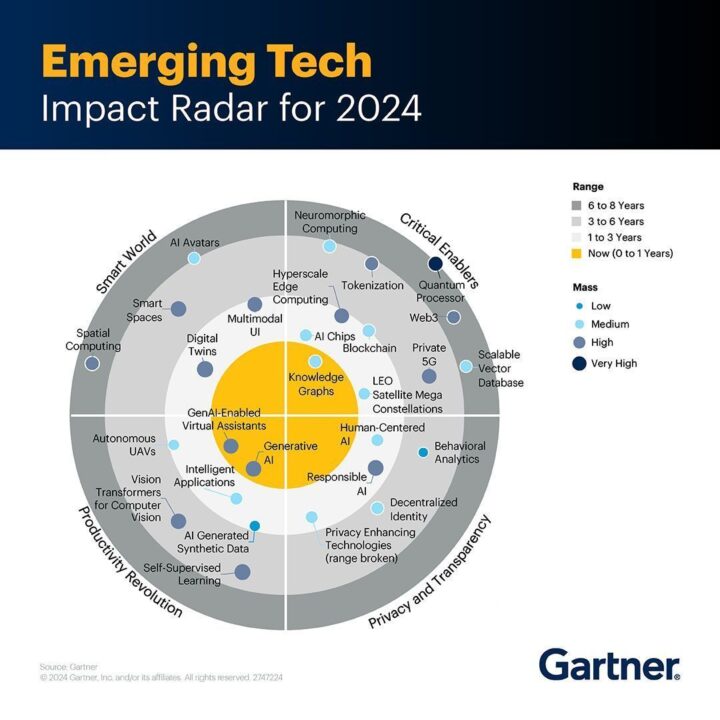
- Capitalization: Secure funding to establish a legal entity and support initial operations.
- Scaling Operations: Expand current feedstock conversion and public WiFi operations.
- Infrastructure Development: Invest in plasma gasification equipment and land acquisition.
11 Contributors
- Ash Aly – President Quant Creative
- Michael Noel, thinking Locally, globally. Broadband First Economic Growth – Broadband Anywhere IoT and W3 Networks,
- Aaron Babcock, President 100Zero / TrifiWireless
- Rhodes Atukwase, Global Advisor, Global Chamber® Uganda. As a founding member of this project alongside Michael Noel, I am thrilled by the potential of Carbon carbon-consuming circular Economies (CCCE) to create positive change in Uganda.
- Mike Tumwesigye With 17 years of experience in non-profit Finance and Administration and a passion for changing lives in disadvantaged societies. I.hug Foundation Uganda, Together for Africa Youth Foundation, and Child Network organizations. A University graduate in Accounting with additional courses in Budgeting planning and donor relationships.
By leveraging the strengths and expertise of these individuals and their organizations, the CCCE project is well-positioned to achieve its ambitious goals and drive sustainable development in Uganda and beyond.
12 Action Items
Campuses can be created in a matter of weeks, anywhere in the world as long as there is enough water to serve agriculture.
If your orginization works in places of displaced populations, these campuses could serve to offer hope, opportunity, education, health, and shelter.
In United States rural areas and Tribal Lands, these Campuses offer opportunity, education, and a greener future. We would welcome your questions or request for aditional information.
In areas with Refeguee populations, Refeguee campuses create hope for a viable future.
Please schedule an introductory meeting with one click right here https://calendly.com/bizbuildermike/15min
or message me on https://Linkedin.com/in/MichaelNoel .
Thank you for your interest and I look forward to connecting.
– Michael Noel
——————————————————————————————————–
